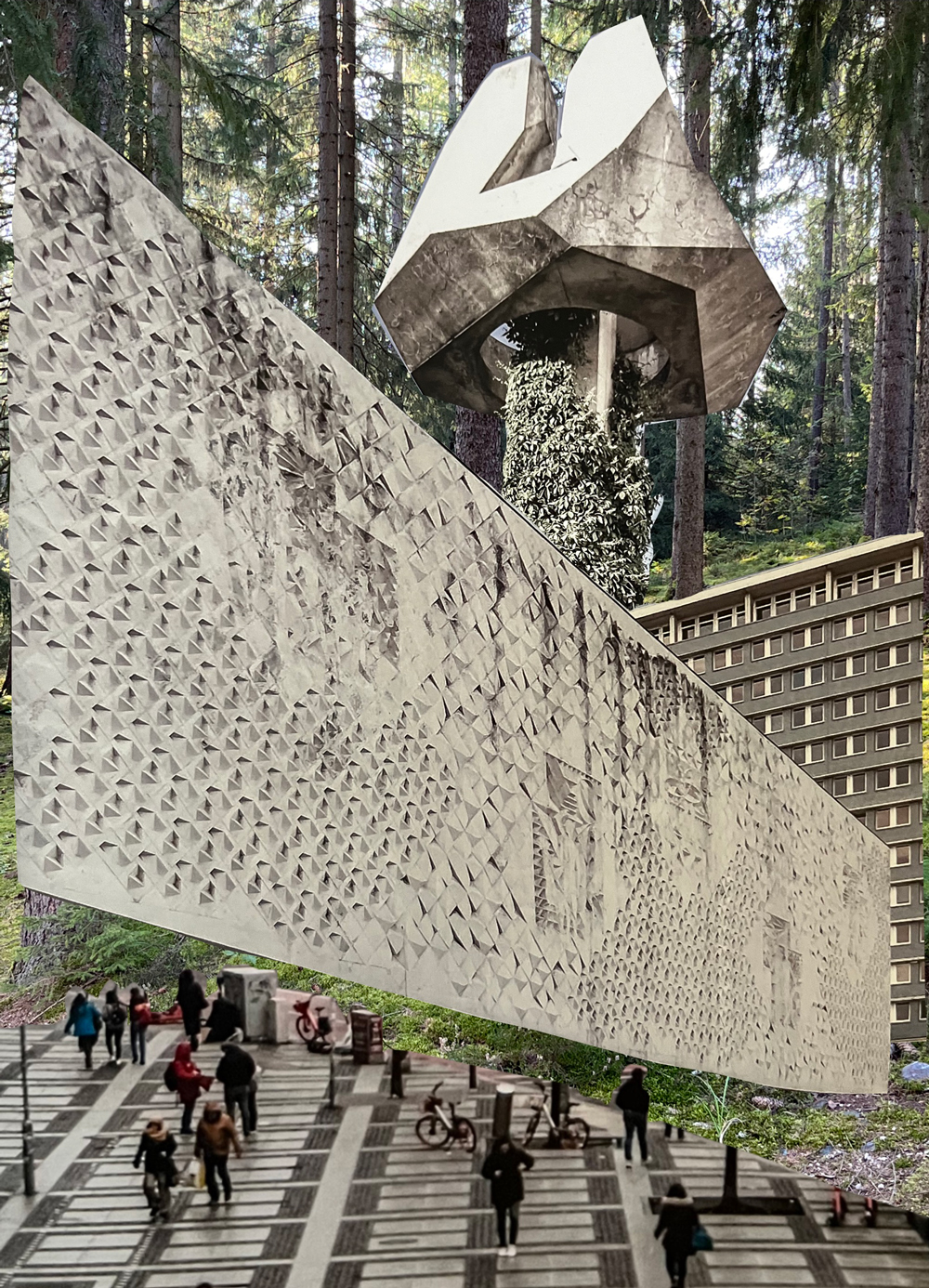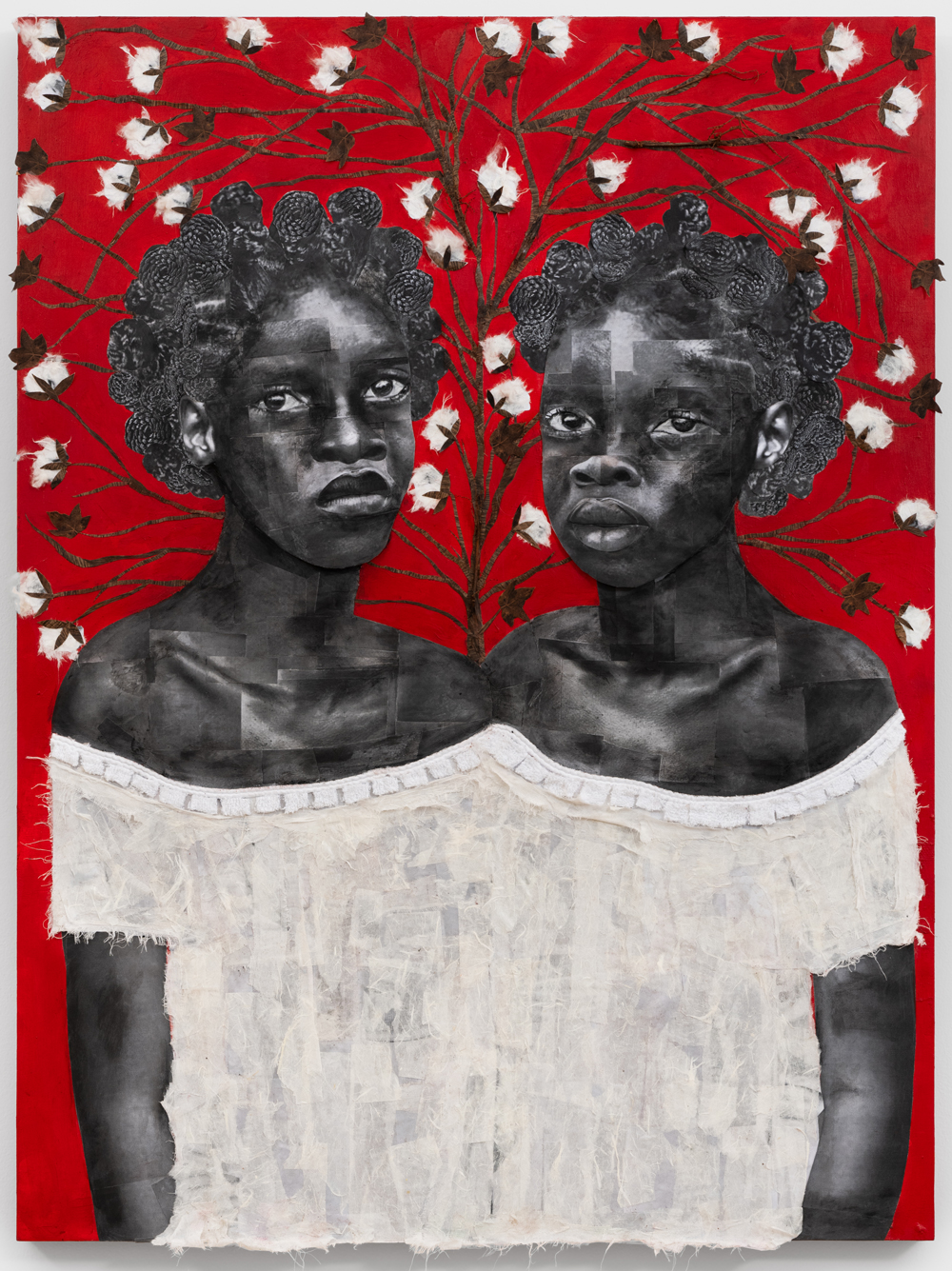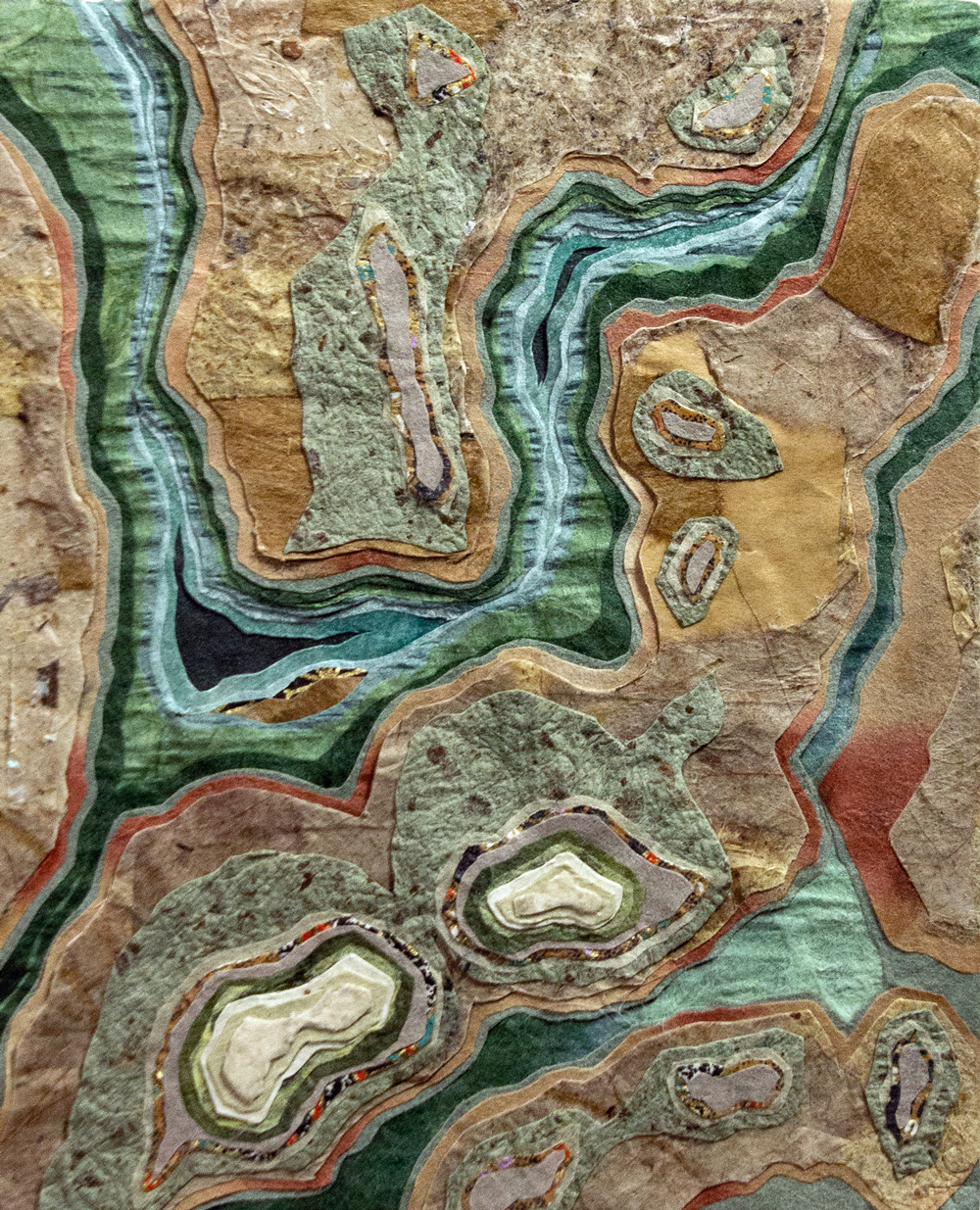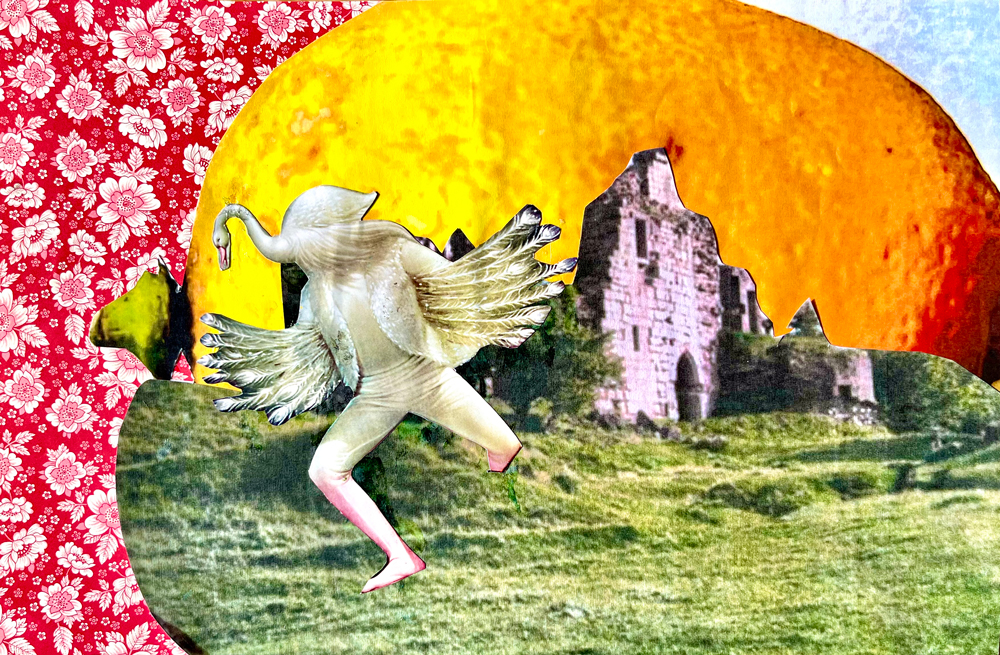
SYMPOSIUM AT KOLAJ FEST NEW ORLEANS 2025
Where are we?: Collage Artists & a Sense of Place
EVENT WEBSITE | REGISTER
Kolaj Fest New Orleans is a multi-day festival and symposium about contemporary collage and its role in art, culture, and society, 25-29 June 2025. Visit the website to learn more, see an overview of the program, and register to attend.
In Lure of the Local, Lucy Lippart wrote, “When we know where we are, we’re in a far better position to understand what other cultural groups are experiencing within a time and place we all share.” Where are we? Modern life is fundamentally diasporic in nature. So many of us are from somewhere else and yet, where we are and when we are shapes who we are at any given point in time. Understanding place is critical to survival and resilience in the 21st century where hostile factors of climate change, late-stage capitalism, and rising authoritarianism threaten community cohesion already stressed by Modernity.
Each of the four artists in the “New African Masquerades” exhibition at the New Orleans Museum of Art contribute to a sense of place in their communities. They draw on traditions, folklore, and religious practices. They use symbols and imagery familiar to their communities. Their performances bring people together and offer the opportunity to connect with ancestral traditions and create shared memories for the future. All of these things foster a sense of place. And each of these artists operate from the now, putting that sense of place in conversation with the Modern lives in which their communities exist.
Lippard wrote about the fragmented nature of contemporary life. “Most of us live such fragmented lives and have so many minicommunities that no one knows us as a whole. The incomplete self longs for the fragments to be brought together. This can’t be done without a context, a place.” Artists play a critical role in developing, expressing, and understanding a sense of place. Approaching the social, physical, and spiritual landscape in this way is fertile terrain for artists who can draw out elements of a place in ways that they are seen and thought about in new ways. During the Symposium at Kolaj Fest New Orleans 2025, we will hear from Paula Mans, Bettina Homann, Laura Cannamela whose work speaks to a sense of place.

40″x30″; mixed media on wood panel; 2025. Courtesy of the artist.
Washington, DC artist Paula Mans creates “figurative collages that engage in visual discourse surrounding the (in)visibility and agency of people of African descent. The works subvert notions of power through the Gaze. Rather than being images to be viewed and consumed, the figures that the artist constructs look defiantly out onto the world–engaging, confronting, and challenging the viewer.” Her “Cotton Flower” project came about when Mans “read a short excerpt, which sparked my imagination about cotton as a symbol, because cotton is such a heavy and weighted symbol for African Americans, due to enslavement. The excerpt said that some enslaved women ingested cotton roots to abort pregnancies during enslavement. That really turned everything on my head of what I thought about cotton and using cotton as a tool of subversion, rather than oppression, rather than subjugation.” She will speak about how she views “the collage process as emblematic of identity formation within the specific context of the African Diaspora.” She will also speak about how visiting the Laura and Whitney Plantations with Kolaj Institute in October 2024 impacted the project.

5.5″x4.5″x0.25”; cut paper relief collage; 2023. Courtesy of the artist.
Place and landscape are intricately linked. Maps are an abstraction of place as informed by the landscape. Artist Laura Cannamela, who splits her time between Upstate New York and Eastern Ontario, uses maps to connect our sense of place to its geologic history. “Living near a gorge carved from glacial flow and eroded by a creek, everyday I observe the interconnectivity of nature through small details that reflect the massive forces which shaped the environment around me,” wrote Cannamela. “In my studio, I research topographic maps along with geological events related to a specific location, and make relief collages from a variety of papers. My work focuses on representing the multi-layered process of land formation. Layers are integral to my subject matter and are visible, essential elements in my work. Making a connection between the landscape created through erosion by natural forces and the relief collage created through cutting away layers of paper is fundamental to my practice. In both nature and in my work, the process of layering indicates a state of transformation, a record of change over time.” Cannamela will speak about how place can be reflected in collage, using examples of her own work and her process of layering clay to suggest the topography and land formation of a specific location.

Born in Vienna, Austria, now in Berlin, Germany, Bettina Homann is a process-based collage artist. She wrote, “Each of my works begins with a movement inside me, an attraction, a reaction to something and with material that falls into my hands. I almost never start with the intention of expressing something specific, I avoid any intention so as not to disturb the process. It is all about the process.” Homann has applied this process to Sanquhar, Scotland where she participated in a Kolaj Institute residency in 2023. Moved by the experience of working in community with other artists, she created Berlinage, a collage residency in which artists explore the city of Berlin together, express their experiences in collages and exhibit their artwork. Homann will speak about how she applies her process-approach to place and how collage is suited to depict the multi-layered collective experience and creation of a city and how a group of international artists simulates and co-creates the energy field of the city. She wrote, “Like the high priestess in the entrails of sacrificial animals, the village witch in coffee grounds, I am constantly on the trail of meaning that lies beyond my limited imagination.
ABOUT THE PRESENTERS
Paula Mans is a painter, collagist, and art educator based in Washington, DC. While Paula is a native Washingtonian, she spent many of her formative years living in Tanzania, Mozambique, Eswatini, and Brazil. Her experiences throughout the African Diaspora shaped her identity and informed the development of her artistic voice. Mans’ work has been curated into group shows in Washington, DC, Baltimore, Atlanta, New York and Kranj, Slovenia. Three of Mans’ collages were included in “Temporal Geolocation: How Place & History Form Identity in Collage”, curated by Ric Kasini Kadour, at Kolaj Institute Gallery in New Orleans, October-November 2024. Her work has been featured in the Washington City Paper, Contemporary Collage Magazine, Suboart Magazine, CanvasRebel Magazine and on WTTG (Fox) in Washington, DC. Mans is a 2023 Sustainable Arts Foundation grantee, a Vermont Studio Center Visual Arts Fellow, and a recipient of the 2024 Arts and Humanities Fellowship for the DC Commission on the Arts and Humanities. Her work has recently been acquired by the DC Commission on the Arts and Humanities Art Bank collection. Learn more at www.paulamans.art.
Born in Vienna, Berlin-based artist Bettina Homann studied literature and art history in Venice, Munich and Frankfurt. She later completed an additional degree in science journalism. Homann was part of Kolaj Institute’s Collage Artist Residency Scotland in April 2023. At Kolaj Fest New Orleans 2023, her work was shown as part of “Passing Place: International Collage Artists Reflect on Sanquhar, Scotland” and she was part of the symposium, “Exploring & Healing Place”. In May 2024, the first session of her Berlin Collage Residency, Berlinage, took place. Learn more at the Kolaj Magazine Artist Directory and on Instagram @kollagenkollektiv.
Laura Cannamela’s work has been displayed in galleries, museums, and non-profit spaces across the country and internationally. Recently her collage work was included in the US Department of State Arts in Embassies program in Timor-Leste, and shown in a solo exhibit at The Hammond Museum in North Salem, New York, at Albany International Airport, and in “Amuse-Bouche” at LeMieux Galleries during Kolaj Fest New Orleans 2024. Her ceramic installation, Currents, was selected for the Hudson Valley Artists Purchase Award and entered into the Samuel Dorsky Museum of Art’s permanent art collection. She has received recognition for her artwork through grants from the Martha Boschen Porter Fund–a fund of the Berkshire Taconic Community Foundation, the Platte Clove Artist-in-Residence Program, the New York Foundation for the Arts (NYFA) SOS Grant Program, the NYFA Mark Program, and the Freeman Foundation, along with the Five College Center for East Asian Studies, to travel to Japan. Born in New Jersey, Cannamela received her MFA from Queens College of CUNY. She resides in the Hudson River Valley of New York and in the Mississippi River Valley of Eastern Ontario, Canada. Learn more at the Kolaj Magazine Artist Directory and www.lauracannamela.com.
Kolaj Fest New Orleans is a multi-day festival and symposium about contemporary collage and its role in art, culture, and society, 25-29 June 2025. Visit the website to learn more, see an overview of the program, and register to attend.
